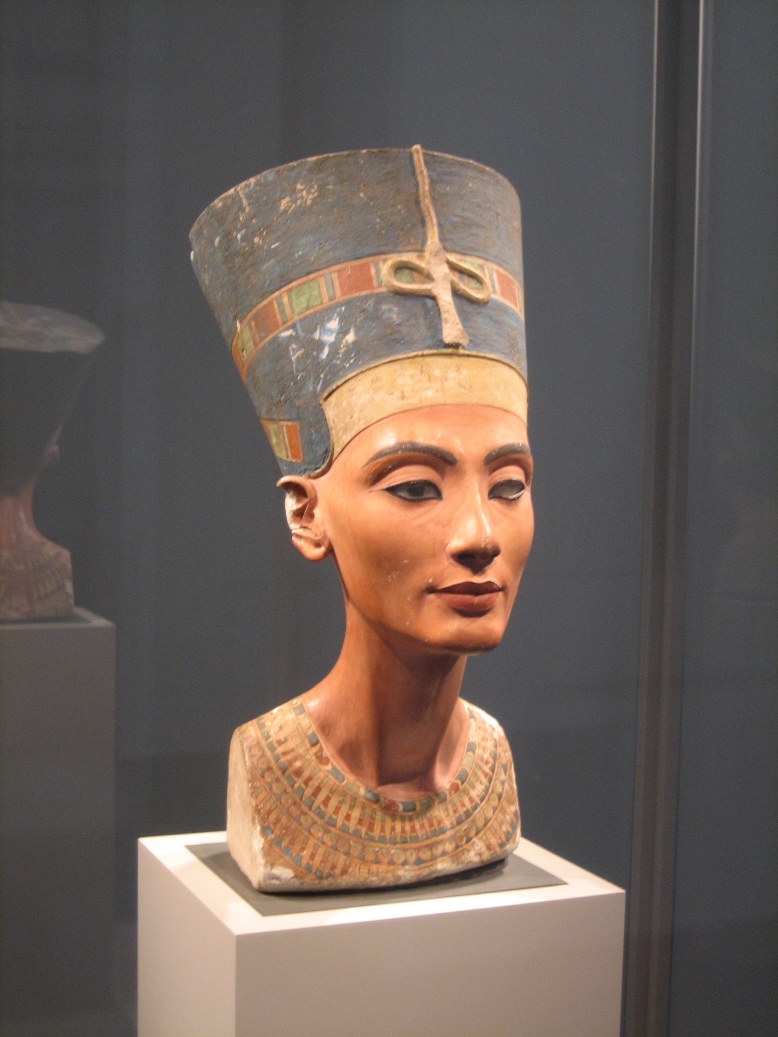
3D Reconstruction of the Bust of Queen Nefertiti Paul Docherty
Ill. : Buste de Néfertiti, XVIIIe dynastie, vers -1338, plâtre polychrome sur ébauche de calcaire, H. 50 cm (Neues Museum, Berlin. ©Akg). À Berlin, le buste de la reine d'Égypte Néfertiti a retrouvé sa place au Neues Museum, rouvert le 19 octobre dernier. Ce trésor des musées berlinois et insigne témoignage de l'art égyptien à.
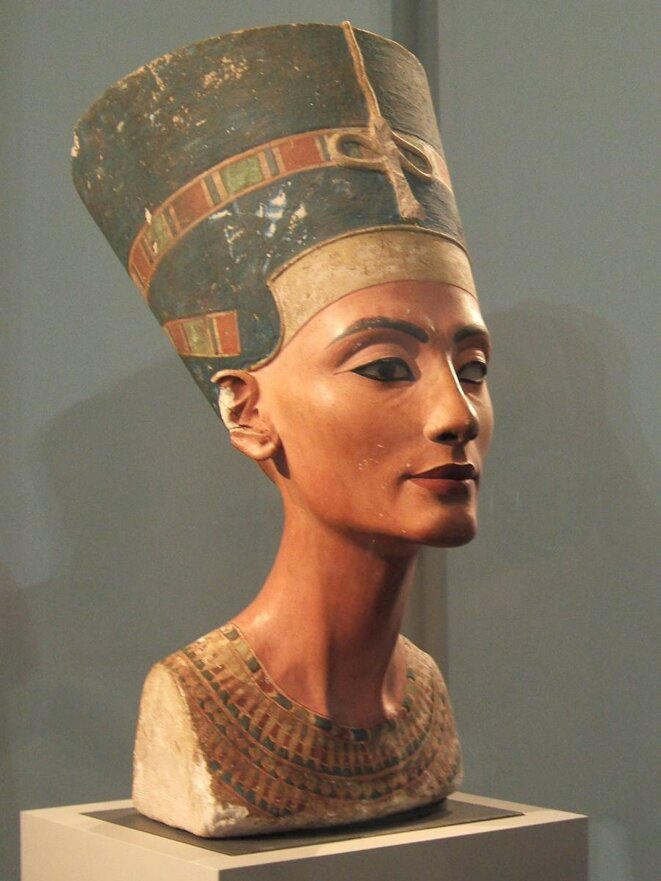
Le buste de Néfertiti a cent ans Le Club
De buste van Nefertiti is een van de beroemdste kunstwerken uit het Oude Egypte, en velen beschouwen het als het mooiste premoderne kunstwerk ter wereld. Het is te bezichtigen in het Egyptisch museum in Berlijn. Uiterlijke kenmerken. De buste is helemaal gemaakt uit kalksteen en volledig beschilderd. Vooral de prachtige conservering.

Le Buste de Néfertiti
The Presentation. With the reopening of the Neues Museum in 2009, the colourful bust of Nefertiti returned to the building in which it was first publicly displayed 85 years earlier. Today the queen's likeness stands in the North Dome Room on the second floor, but her museum career began in the Greek Courtyard. The bust arrived in Berlin in 1913.

Thutmose, Bust of Nefertiti, c.1345 BCE, Egyptian, Amarna Period, Dynasty XVIII Nefertiti
Le buste de Néfertiti, appelé aussi la tête de Néfertiti, est une sculpture de calcaire peinte du XIVe siècle av. J.-C., représentant Néfertiti, la grande épouse royale du pharaon égyptien de la XVIIIe dynastie Akhenaton, aujourd'hui exposée au Neues Museum de Berlin. Cette œuvre, symbole de la période amarnienne, est devenue un.
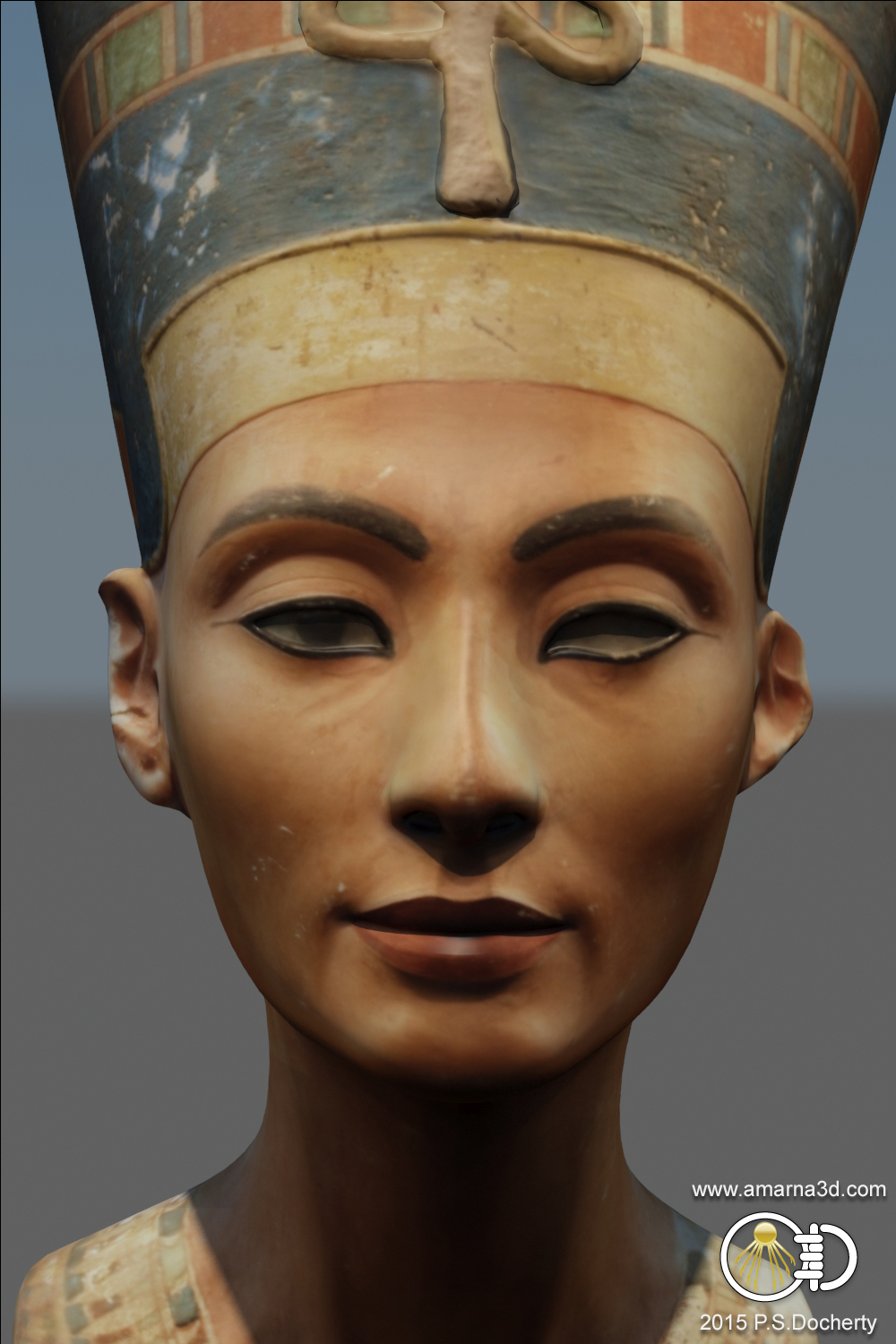
3D Reconstruction of the Bust of Queen Nefertiti Paul Docherty
In his book, Le Buste de Nefertiti - une Imposture de l'Egyptologie? (The Bust of Nefertiti - an Egyptology Fraud?), Stierlin has claimed that the bust was created to test ancient pigments.

Queen Nefertiti Brought Back To Life Through Incredible 3D Mapping Technology NinjaJournalist
Buste de Néfertiti à Berlin (Neues Museum) - Art & Histoire. Le buste de Néfertiti est l'une des sculptures les plus belles et les plus célèbres du monde. Œuvre d'art de l'Égypte ancienne, il est aujourd'hui conservé au Neues Museum de Berlin (nous reviendrons sur cette histoire plus loin). Mais qui était Néfertiti ?
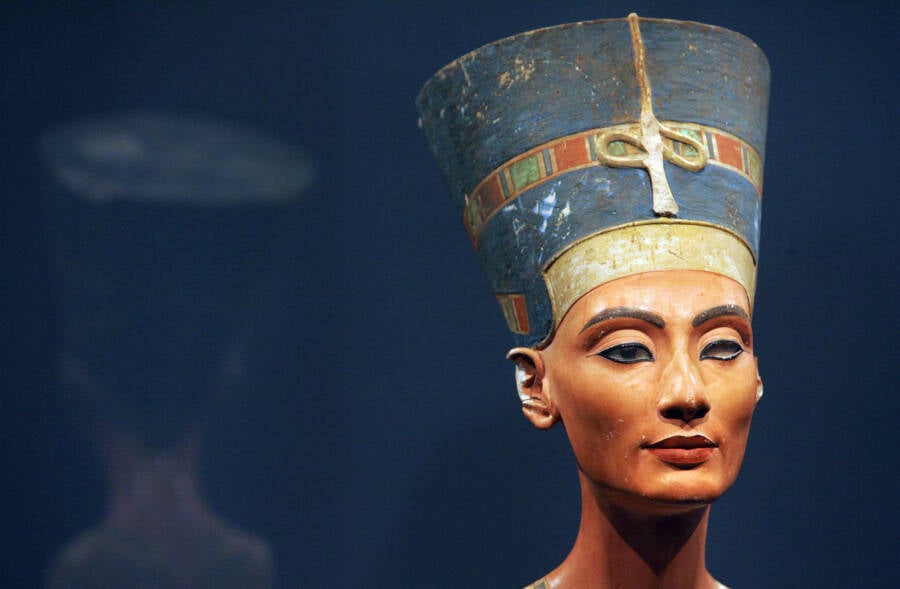
La momie perdue de la reine Néfertiti atelle enfin été retrouvée ? Fiyiz
Bust of Queen Nefertiti New Kingdom, Dynasty 18, ca. 1340 BC Limestone, gypsum, crystal and wax Amarna Height 50 cm Inv.-No. ÄM 21300 This bust is one of the first ranking works of Egyptian art mostly due to the excellent preservation of the colour and the fine modelling of the face. She was found in 1912 during the excavations of the German-Orient-Association in city of Achet-Aton, today.
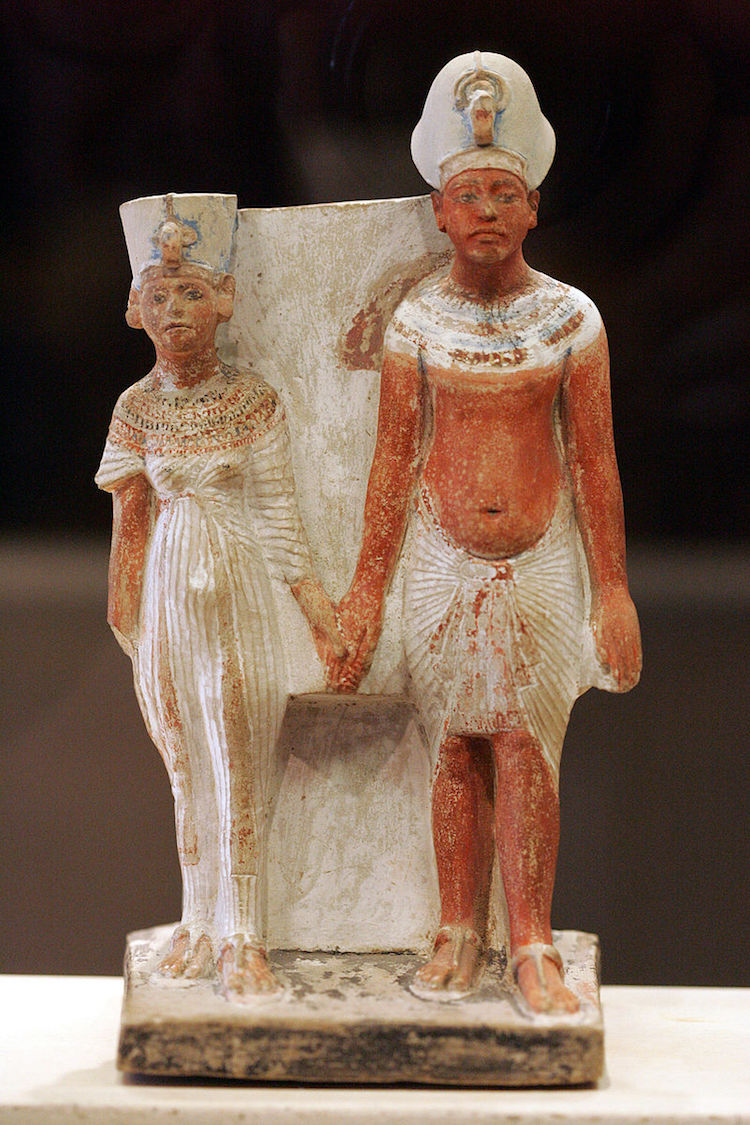
11 Facts About the Ancient Egyptian Queen Nefertiti
The Bust. "Life-sized painted bust of the queen, 47 cm high. With the flat-cut blue wig, which also has a ribbon wrapped around it halfway up. Colours as if paint was just applied. Work absolutely exceptional. Description is useless, must be seen. Counterpart to the bust of the king from p.

Le buste de Néfertiti Ancient egypt gods, Nefertiti, Ancient egyptian art
PHOTOGRAPHIE DE Bpk, Scala, Florence. Néfertiti, grande femme royale d'Amenothep IV (mieux connu sous le nom d'Akhenaton, qu'il a adopté plus tard dans sa vie), est une des figures les plus mystérieuses de l'Histoire et une de celles ayant le plus fait l'objet de louanges. Une multitude de passages dithyrambiques s'attardent sur.

Cheddar Man and Nefertiti tell a tale of two different historical reconstructions JUST ADD COLOR
En 1912, un archéologue allemand découvre à Amarna, en Moyenne-Égypte, le buste de l'épouse du pharaon Akhenaton, la reine Néfertiti. Elle devient dès lors l.

Le buste de la reine Nefertiti par Thoutmes ART Histo
Nefertiti served as his queen from the 1350s-1330s BC (nearly 3.5 thousand years ago!). The royal couple lived in Akhenaten's new capital city of Amarna, roughly halfway between Cairo and Luxor. Nefertiti appears in a lot of art alongside Akhenaten, as do their daughters (see photo below). These are not casual pictures of the royal couple.
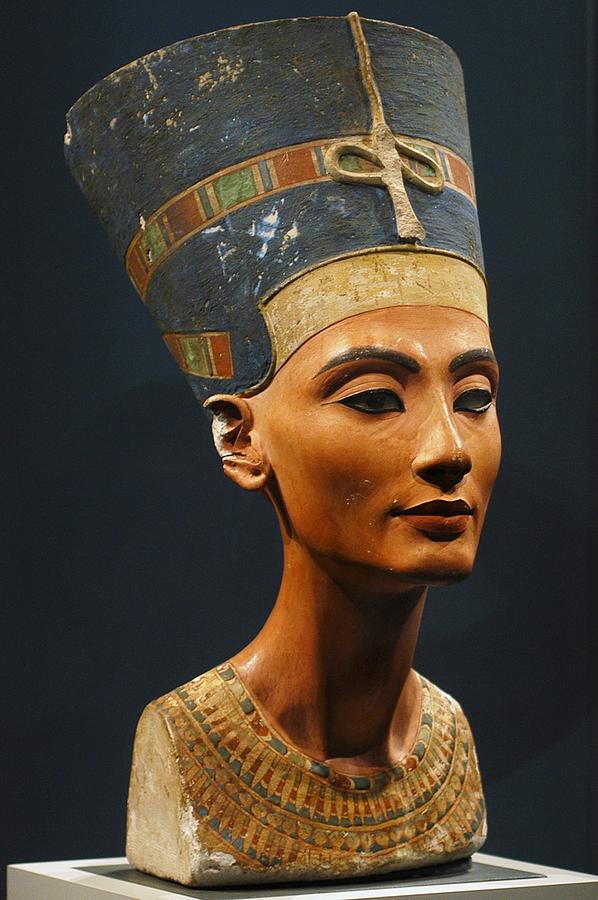
Germany. Berlin. Nefertiti Bust Photograph by Everett Fine Art America
The iconic bust of Nefertiti, which is part of the Neues Museum in Berlin; Philip Pikart, CC BY-SA 3.0, via Wikimedia Commons While it was once assumed that Nefertiti died or changed her name in the 12th year of Akhenaten's rule, as per a limestone quarry inscription found at Dayr Abinnis "on the eastern bank of the Nile, about ten kilometers north of Amarna," she was still healthy in.

Sculpture Study Sunday Bust of Nefertiti Considering Our Musings
The Bust of Nefertiti. It is the undisputed star of the Neues Museum and, along with the Pergamon Altar and the Ishtar Gate, the best known exhibit on Berlin's Museumsinsel: the colourfully painted bust of Nefertiti, created around 1340 BC. Since it was placed in the North Dome Room of the Neues Museum, which reopened in 2009, it has drawn.

My Tribe Bust of Nefertiti
Ce buste de 50 cm, trouvé sous des gravats à Tell el-Amarna, en Haute Égypte, c'est celui de la reine Néfertiti, « La parfaite est venue ». Mariée à 15 ans au pharaon Akhenaton au XIVe siècle av. J.-C., elle va partager avec lui le pouvoir le temps d'un règne qui est un des plus originaux de la longue histoire de l'Égypte. Trop.

Buste De Nefertiti Photo Getty Images
Selon l'archéologue Alain Zivie, le buste de Néfertiti conservé au Neues Museum de Berlin serait l'œuvre d'un certain Thoutmès dont la tombe a été récemment fouillée. Découvert le 6 décembre 1912 par Ludwig Borchardt, le buste de la reine Néfertiti, sœur et épouse d'Akhenaton-Aménophis IV, a rapidement été attribué à.
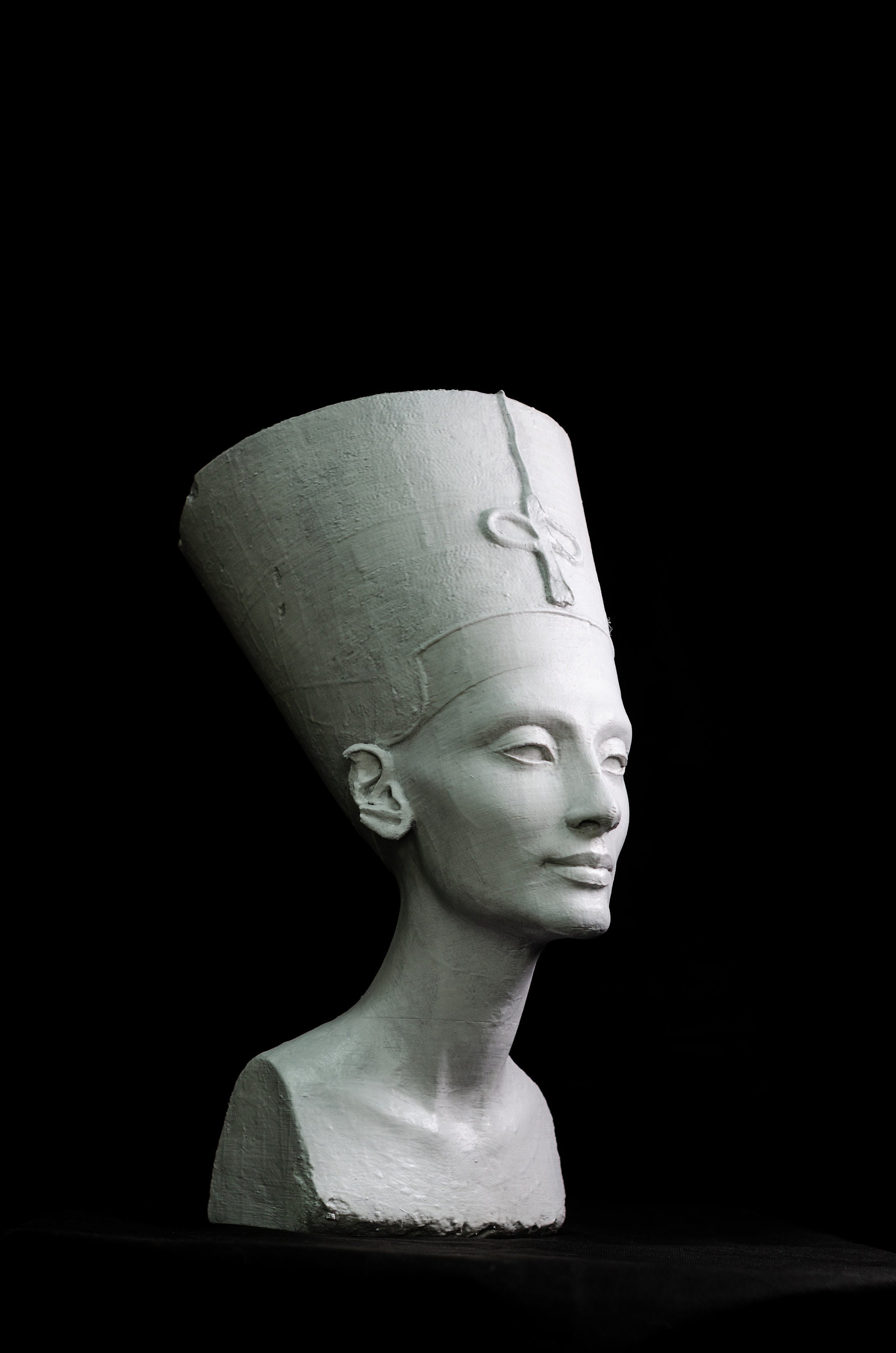
Nefertiti Statue for sale Only 4 left at 60
The Bust of Nefertiti in the Neues Museum, Berlin. On 6 December 1912 a limestone bust of Nefertiti was unearthed by a German archaeological team led by Ludwig Borchardt. The archaeologists were excavating in Armana, and came upon the ancient sculptor Thutmose's workshop. Frequently described as the most famous face from antiquity, this bust.